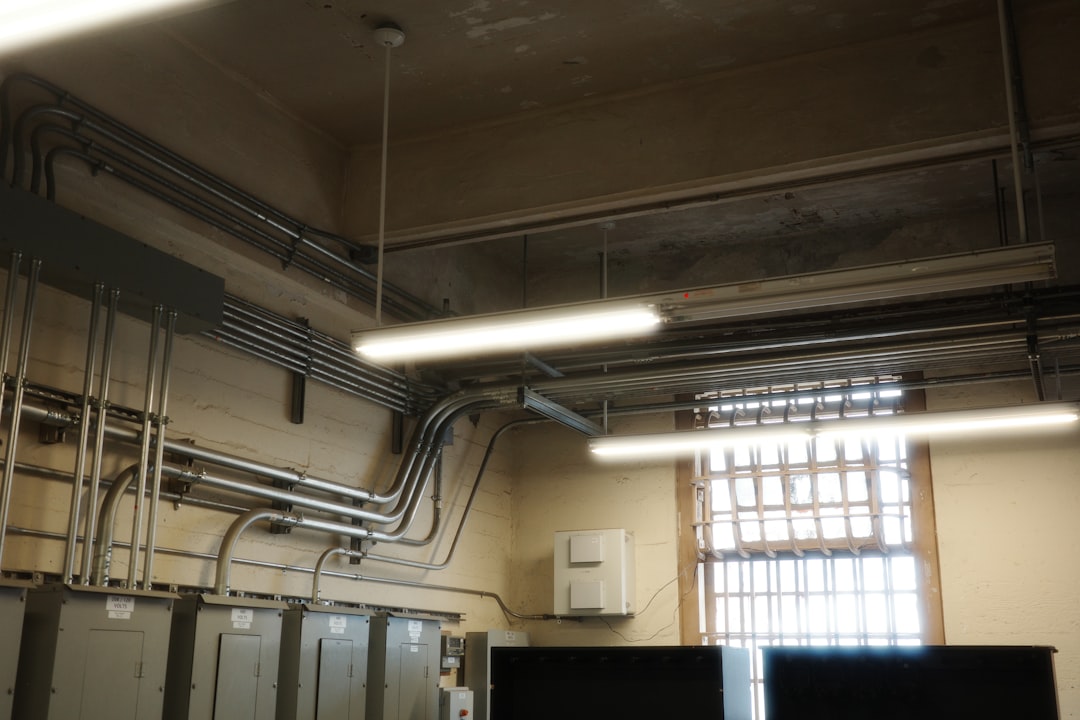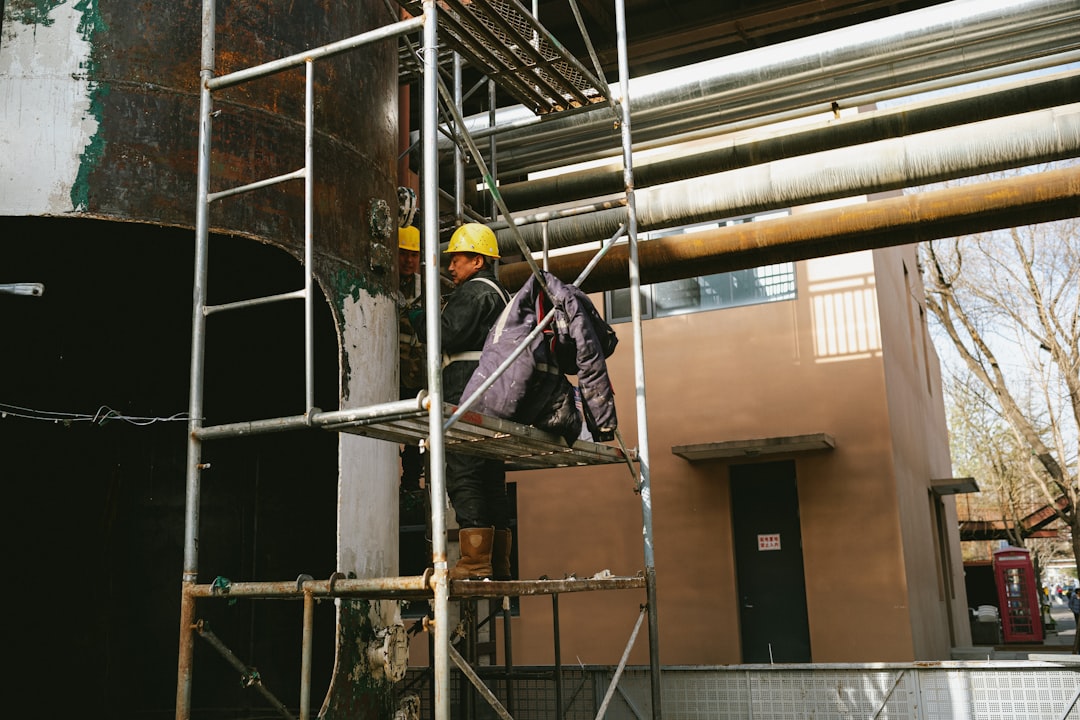

Engage prospects with a scan and streamline customer engagement with FREE QR code marketing tools by Sona – no strings attached!
Create a Free QR CodeFree consultation

No commitment

Engage prospects with a scan and streamline customer engagement with FREE QR code marketing tools by Sona – no strings attached!
Create a Free QR CodeFree consultation

No commitment
Artificial intelligence has become more than a buzzword in modern marketing; it is a force that dynamically transforms how brands engage consumers. As digital landscapes continue to evolve, marketers who harness AI-driven strategies are gaining a decisive edge in personalization and efficiency. This shift goes beyond automation, delving deeply into predictive analytics and content optimization.
As with any disruptive force, AI presents challenges. Concerns over data privacy and algorithm transparency have prompted calls for robust oversight. At the same time, adopting AI thoughtfully opens new pathways to connect with consumers in meaningful ways. Businesses that blend creativity with intelligence will shape the future of marketing in an ever-connected world.
QR codes have transformed ventilation contracting companies from traditional service providers into agile, tech-enabled partners that empower technicians and enhance operational efficiency. By integrating QR codes into equipment tagging, troubleshooting guides, and maintenance logs, these companies can streamline technician workflows, reduce errors, and accelerate service turnaround times. Imagine technicians instantly accessing accurate, up-to-date information on-site through a simple scan—boosting productivity and customer satisfaction simultaneously.
With Sona QR, ventilation contractors can create dynamic, trackable QR codes in seconds, update content instantly without costly reprints, and monitor every scan to optimize technician support and resource allocation. This powerful tool turns everyday service interactions into measurable, actionable data that drives smarter decisions and higher-value outcomes.
Start for free with Sona QR today and transform how your team works—making every scan a step toward faster service, happier customers, and stronger growth.
Working with a ventilation contracting company provides expertise in installing and maintaining ventilation systems to ensure quality air flow and system efficiency.
Ventilation contracting companies ensure quality service by using skilled professionals who follow industry standards and employ the latest technologies for system installation and maintenance.
Contracting companies install and maintain a variety of ventilation systems tailored to residential, commercial, and industrial needs.
You can find a reputable ventilation contracting company by researching local providers, checking customer reviews, and verifying their certifications and experience.
The latest trends in ventilation contracting services include the adoption of advanced technologies and energy-efficient systems to improve air quality and reduce operational costs.

QR codes have evolved from a novelty to a strategic powerhouse, bridging offline engagement with online action for ventilation contracting companies. Traditional processes often fail to address real-time technician support, seamless data capture, and consistent asset management, which results in missed opportunities and unnecessary administrative overhead. QR codes now offer an efficient way to streamline technician support, improve field operations, and enable real-time data flow without the barriers of app downloads or manual workflows.
With customers and technicians expecting quick, digital-first solutions, outdated systems and paper-based workflows slow response times and lead to missed high-value prospects, along with a lack of visibility into crucial onsite activities. QR codes directly connect physical job sites, equipment, and documentation to essential digital systems, accelerating access to manuals, automating service requests, and tracking inventory. This eliminates friction, reduces errors, and brings clear improvements in productivity, customer service, and revenue measurement.
Deploying QR codes at everyday touchpoints allows ventilation contracting companies to upgrade outdated processes with scalable workflows. Integrated correctly, this technology supports HVAC contractors in achieving higher efficiency, safety, and accountability. Every scan becomes an opportunity to advance business goals, increase transparency, and capture essential operational data.

Persistent challenges such as missing field documentation, technician delays, or inconsistent manual logs directly undermine the efficiency of ventilation contractors. QR codes bridge these gaps by connecting physical touchpoints to digital outcomes, which reduces technician downtime, minimizes errors, and ensures reliable tracking of onsite actions. When a tech can scan a label on an air handling unit and instantly access a procedure, log a fault, or start a parts request, the workday speeds up and quality improves.
Start by identifying where analog processes slow down your teams. Replace printed binders of SOPs with QR-linked digital manuals that always reflect the latest revision. Move away from paper commissioning sheets and toward mobile forms triggered by a scan. Convert phone-based triage into self-serve knowledge base articles tied to each asset. The goal is simple: every frequently accessed resource should be reachable with one scan and one tap.
Transitioning from paper job sheets to QR-linked digital references eliminates wasted time, helps recover lost technician hours, and enables precise tracking of high-value prospects. It also automates compliance and equipment status updates, reduces administrative burden, and improves confidence in the accuracy of field data. Sona QR supports this end-to-end transformation with dynamic codes, device detection, analytics, and CRM integrations that bring the full loop of scan-to-outcome into one system.

Ventilation contractors commonly struggle with a lack of visibility into jobsite activity, incomplete account data, and lost revenue from missed follow-up. QR codes are uniquely suited to solve these offline-to-online challenges and enhance operational effectiveness for HVAC professionals. By removing barriers between physical environments and digital systems, teams can capture the right action in the moment and attribute outcomes accurately.
In practice, QR codes give a site supervisor a faster path to report a hazard, a technician a richer set of instructions tailored to the exact model, and a customer a simpler way to request service or pay an invoice. These improvements compound across many touchpoints, translating into measurable gains in utilization, safety, and margin.
Technology should empower, not encumber. For ventilation contracting companies, QR codes elevate technician and customer experiences, while giving operations and leadership the data needed to improve retention, target service offerings, and allocate spend more intelligently.

Not all QR codes are the same. The format you choose determines what happens after the scan and how easily you can manage change. Ventilation contractors benefit from a core set of formats that map to daily workflows in the field, at the office, and on the road.
Static codes are suitable for permanent destinations like a warranty PDF. Dynamic codes are preferred for most operational uses because destinations can be edited and analytics captured without reprinting. When in doubt, choose dynamic for flexibility and measurement.
A platform like Sona QR lets you create and manage all of these formats in one place, standardize your brand across labels, and audit performance by site, customer, or asset class. For ventilation work, web link and form formats typically deliver the fastest returns because they align with technician tasks and compliance requirements.

Growth for ventilation contracting companies often stalls at the transition from field activity to digital measurement, complicated by missed jobsite interactions and disconnected communications. QR codes expose latent opportunities by turning every physical touchpoint into an actionable entry point and by capturing engagement data you can use to improve follow-up and forecast demand.
Start by mapping your customer journey and operational workflows. Ask where a scan could reduce friction or recover a missed signal. Prioritize high-traffic and high-stakes areas, such as equipment rooms, safety boards, vehicle exteriors, invoices, and trade show booths. For inspiration, explore 7 ways to use QR codes.
Placing QR codes at these touchpoints addresses missed opportunities and amplifies both revenue and operational insight. As you gather data, refine placements based on scan rates and downstream actions to double down on what works.
QR codes excel when they unlock a specific action in context. For ventilation teams, the most valuable use cases are tightly connected to field operations, safety, and customer lifecycle moments. Each use case should specify where the code lives, what it triggers, and how success is measured.
Begin with a small portfolio of high-impact use cases, prove lift with analytics, then scale across regions and asset classes. Equip a cross-functional team to keep content current and ensure field adoption through training and incentives.
These applications replace paper lookups and manual documentation, improve segmentation of field activity, and reveal upsell opportunities based on actual usage data. Even small changes, such as adding a scan-to-reorder code to filter bins, can prevent emergencies that jeopardize SLAs.
Each QR code scan is a signal that captures intent, context, and behavior. By deploying codes along the entire journey, ventilation contractors can segment audiences automatically and feed that intelligence into follow-up campaigns that improve conversion and lifetime value, like intent-driven retargeting. A scan to access a manual is different from a scan to request emergency service, and your follow-up should reflect that difference.
Think in terms of roles and motivations. Facility managers scanning an asset tag during maintenance are service loyalty candidates. Homeowners scanning a van decal likely need help now. Procurement staff scanning a trade show flyer are researching options. With Sona QR, you can tag scans by use case, location, and campaign source, then sync them into your CRM and ad platforms for tailored outreach.
Audience distinctions that work well in ventilation include facility managers versus homeowners, contract customers versus one-time callers, service-only accounts versus retrofit prospects, and safety-savvy teams versus training-needy crews. This structure helps you speak directly to needs and convert interest into scheduled work more efficiently.
QR codes are more than convenient shortcuts. They act as connective tissue across offline and digital campaigns, enabling real-time engagement and richer data collection in every channel you already use. The result is a consistent message across print, vehicles, events, and digital properties, with offline attribution.
To operationalize this, align marketing, operations, and service. Standardize your code design, enforce naming conventions, and maintain a shared content library. With Sona QR, you can manage all codes centrally, monitor performance, and sync scan data with your CRM and ad platforms so no interest goes untracked.
QR codes serve as the offline onramp to your digital marketing engine. When combined with analytics and CRM workflows, they deliver a closed-loop system that turns curiosity into conversions and improves your ability to forecast pipeline.
A structured plan helps ventilation teams move from ideas to outcomes. This checklist turns QR concepts into repeatable campaigns that capture field data, improve response times, and attribute revenue. Start with a contained pilot, validate results, and then roll out systematically to assets, vehicles, and documents.
Before you begin, align stakeholders on goals and governance. Decide who owns content updates, how scans will be monitored, and what triggers will alert dispatch, sales, or safety teams. The more clarity you create up front, the faster adoption will happen in the field.
Identify a process bottleneck and align it to a clear business outcome. A common starting point is delayed technician check-ins or missing commissioning forms. A QR that triggers a mobile form can automate compliance reporting and reduce back-office chase time.
Start with one or two high-throughput moments, such as equipment support tagging and invoice payments. Document the current baseline for time-to-first-response, missing data percentage, and customer satisfaction so you can quantify lift after launch.
Choose between static and dynamic codes. Static works for permanent, low-risk destinations like a warranty PDF. Dynamic is best for editable links, analytics, and retargeting. For most operations and marketing placements in ventilation, dynamic codes provide the needed flexibility and measurement.
Map formats to intent. Use web links for manuals and videos, form links for incident reports and reorders, and device-aware app links for internal field tools. Sona QR supports all of these and lets you update destinations without reprinting labels.
Incorporate your logo and brand colors, but keep contrast high for reliable scanning. Add a clear call-to-action like Scan for manual or Scan to book service. Select materials suited to the environment: UV-resistant vinyl for rooftops, chemical-resistant laminates for plant rooms, and aluminum plates for high-heat areas.
Test across devices, angles, lighting, and distances. Ensure a quiet zone around the code, minimum physical size based on viewing distance, and scannability with gloved hands. Validate that the landing pages load fast on cellular networks and are mobile-first.
Roll out placements that match your growth plan and audience behavior. Prioritize equipment stickers in mechanical rooms, vehicle decals in service territories, safety boards at site entrances, and invoices handed to customers. Sequence deployments so each new placement complements the last and uses consistent taxonomy.
Provide a short training for technicians and office staff. Explain the why behind each code, show how to use it, and define the desired outcome. A five-minute toolbox talk can double adoption by answering simple questions up front.
Use Sona QR to track scans by time, location, device, and campaign source. Monitor conversion behavior and drop-off points on linked forms or pages. Run A/B tests on CTAs or destination content to lift engagement.
Establish a review cadence. Share weekly or biweekly dashboards that highlight top-performing placements, underused codes, and new opportunities. Iterate designs, refine copy, and reassign codes as necessary to improve outcomes.
The inability to connect engagement with business outcomes is a costly blind spot for HVAC firms. QR analytics turn scans into valuable data, helping contractors justify investments and identify lost opportunities. When every scan has metadata and a downstream action, leaders can trace the line from field activity to booked revenue.
Adopt a measurement mindset. Treat each QR as a mini-campaign with a goal, audience, and conversion event. Use consistent naming conventions and UTM parameters, and ensure scan events flow into your analytics and CRM platforms. The result is a coherent view of performance, not isolated data points.
Sona QR captures real-world engagement with robust analytics, and Sona.com extends that data to identity resolution and multi-touch attribution. Together they link scans to pipeline and closed revenue so QR becomes part of your performance marketing and operations intelligence stack.
QR campaigns underperform when they lack segmentation, tracking, or frontline training. The fix is straightforward: treat QR as a program, not a one-off, and invest in the behaviors that make it work. The best results come when operations and marketing move in lockstep and when technicians see immediate value from scanning.
Aim for repeatable plays. Use unique codes per asset class or document type, add UTMs for accurate attribution, and automate follow-up using your CRM. In the field, focus on durable materials and thoughtful placements that work in harsh environments.
Two creative deployments that work well in ventilation: QR codes on rooftop unit nameplates that open the exact wiring diagram and fault codes, and QR codes on invoices that let customers rebook maintenance in seconds while feedback is still fresh.

Results improve when QR deployments mirror real work. The following examples show how ventilation contractors have put QR to work in the field and at the office, along with the outcomes they achieved. While every operation is different, these patterns repeat across regions and market segments.
Each example highlights the core principle of context. Put the right action one scan away at the moment of need, then measure and optimize the experience. Over weeks and months, small cycle-time gains compound into substantial savings and higher customer satisfaction.
HVAC companies that implement dynamic QR campaigns often report higher retention, more upsell opportunities, and year-over-year ROI gains near 35 percent. These gains come from better visibility into field activity, faster response to customer needs, and stronger alignment between operations, sales, and marketing.
Smart execution separates reliable results from scattered experiments. The tips below help maximize adoption and ROI while avoiding common mistakes that erode trust or data quality. Pay special attention to durability and CTAs, since ventilation environments and workflows are demanding.
Pitfalls to avoid include placing codes where they are hard to reach or scan, linking to outdated content, and failing to connect scans to follow-up workflows. Success requires continuous stewardship: audit labels periodically, review analytics, and keep content relevant.
By focusing on placement, durability, tracking, and training, ventilation contracting companies can avoid common pitfalls and capture the full benefits of QR technology throughout the business.
For ventilation contracting companies, QR codes provide a practical solution to the gap between physical operations and digital visibility. By targeting process bottlenecks and surfacing critical engagement data, QR deployments boost compliance, productivity, and service personalization. When aligned with business goals and backed by analytics, every scan becomes a valuable asset that accelerates technician efficiency and customer satisfaction.
Sustained success comes from treating QR as a system, not a novelty. Standardize formats and CTAs, deploy durable labels in high-value places, connect scans to automated workflows, and measure everything. With Sona QR, you can generate and manage dynamic codes, analyze performance, and sync data to Sona.com for attribution. Start creating QR codes for free.
QR codes have revolutionized ventilation contracting companies by transforming technician support into a seamless, data-driven process. By enabling instant access to equipment manuals, troubleshooting guides, and service histories right on-site, QR codes enhance technician efficiency and accuracy, reducing downtime and improving service quality. Imagine empowering your technicians with real-time information that accelerates repairs and boosts customer satisfaction on every job.
With Sona QR, ventilation contractors can create dynamic, trackable QR codes that update instantly—no need to reprint or redistribute materials. This means every scan delivers actionable insights, helping you optimize technician workflows and elevate client experiences while connecting engagement directly to business outcomes. Start for free with Sona QR today and turn every scan into faster fixes, happier customers, and measurable growth for your contracting business.
QR codes streamline technician support, improve field operations, enable real-time data flow, reduce errors, enhance productivity, and increase customer satisfaction and revenue measurement.
They deploy QR codes on equipment tags, safety boards, and vehicles to provide instant access to manuals, automate work orders, track inventory, and capture compliance data with real-time analytics and CRM integration.
Companies use QR codes for equipment tagging on air handlers, fans, VAV boxes, controls panels, mobile inventory management, safety compliance checklists, customer feedback collection, and lead capture on fleet graphics.
Look for companies that integrate dynamic QR code solutions for technician support, real-time data capture, and customer engagement, and that provide measurable improvements in response times and service quality.
Trends include using dynamic QR codes for real-time content updates, multi-channel marketing integration, automated follow-up based on scan data, mobile inventory triggers, and detailed analytics to drive operational and sales improvements.
QR codes reduce technician downtime by providing instant access to up-to-date manuals, troubleshooting guides, fault logging, and parts requests through simple scans, eliminating paper workflows and manual data entry.
Common formats include web links for manuals, custom forms for maintenance and incident reporting, vCards for contact info, Wi-Fi access codes, and app download links, with dynamic codes preferred for flexibility and analytics.
Effective placements include equipment stickers in mechanical rooms, vehicle decals, jobsite safety boards, invoices, trade show materials, and inventory bins to capture data and trigger actions related to each touchpoint.
They track scan data including time, location, device, and campaign source, monitor engagement metrics like form submissions and payments, sync data with CRM systems, and measure improvements in response times and revenue attribution.
Best practices include placing codes where technicians naturally pause, using durable materials, maintaining up-to-date linked content, employing trackable campaign links, training staff on scanning benefits, and ensuring privacy compliance.
Use Sona QR's trackable codes to improve customer acquisition and engagement today.
Create Your FREE Trackable QR Code in SecondsJoin results-focused teams combining Sona Platform automation with advanced Google Ads strategies to scale lead generation

Connect your existing CRM

Free Account Enrichment

No setup fees
No commitment required

Free consultation

Get a custom Google Ads roadmap for your business






Launch campaigns that generate qualified leads in 30 days or less.
